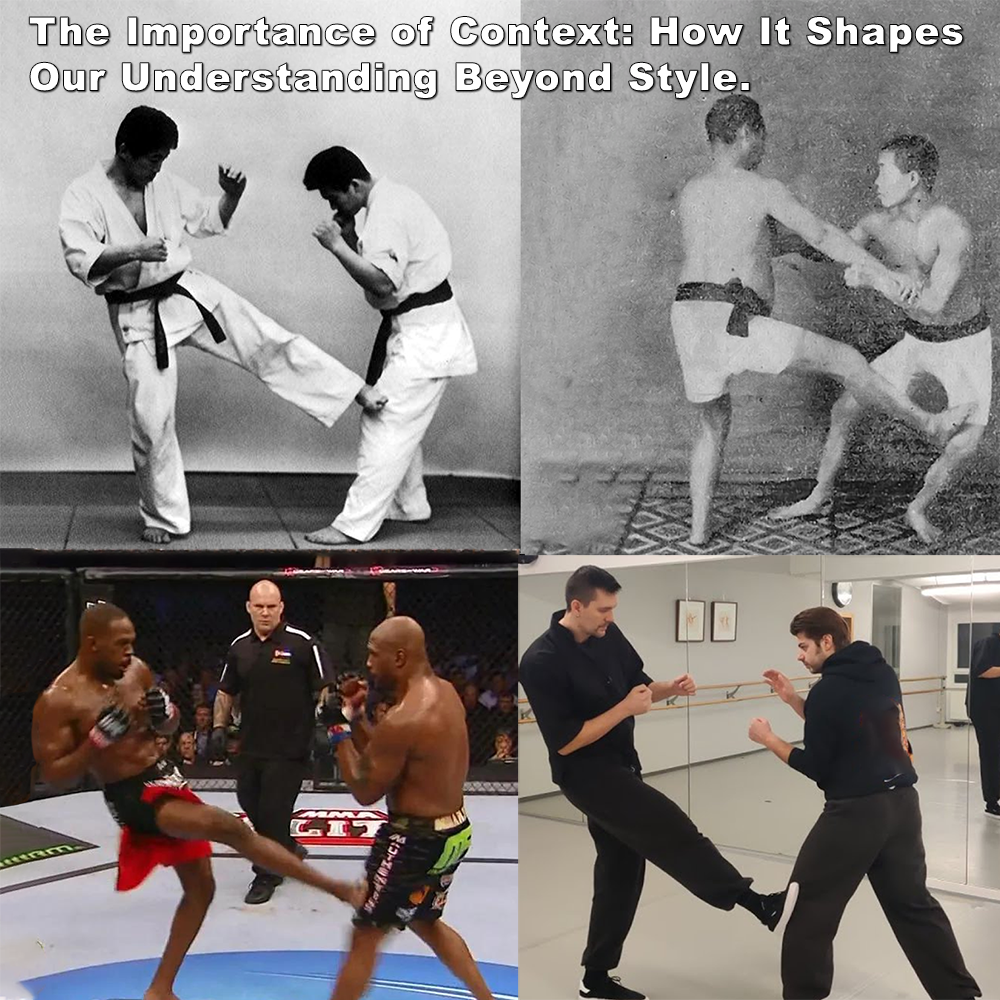
The Importance of Context: How It Shapes Our Understanding Beyond Style.
Posted by ADAM CARTER on AUG 24, 2024

The Importance of Context: How It Shapes Our Understanding Beyond Style.
(Approx 2 minute read)
Whenever people ask me about karate or inquire about joining our dojo, the question I get asked most often is, “What style of karate do you practice?” It’s a question that reveals a lot about the way people perceive martial arts. But what does this information really tell us? Does knowing a style truly provide insight into a practitioner’s skill or understanding of karate?
I believe the fixation on style – and the mentality that “my style is the best” – is misguided. Of course, you’re going to feel attached to your style. But the truth is, all karate styles rest upon similar principles, influenced only by various interpretations of common knowledge.
What matters most isn’t the style you practice, but what you can do and what kind of person you are. That’s why I often just say, “I practice karate”.
While the fundamentals are consistent, each style of karate interprets and emphasizes them differently, often within different contexts. Understanding these contexts is crucial, as each style has been developed with specific scenarios and needs in mind. These differences are not about right or wrong but about various ways to achieve similar goals: effectiveness in self-defense, physical conditioning, competition, mental discipline and more.
Practicing within the correct context ensures that the techniques and principles you learn are applicable and relevant to your personal goals. For instance, techniques and strategies suited for competitive environments may not always align with self-defense scenarios, and vice versa. Recognizing and respecting these contextual differences can enhance your practice and allow you to adapt the principles of karate to fit your specific needs.
Ultimately, appreciating the context in which different styles have developed helps you understand and value their unique contributions. It allows you to see beyond superficial differences and focus on the core principles that unite all styles, while also acknowledging how context shapes their application and effectiveness.
However, an overemphasis on style can lead to a narrow view of karate.
When practitioners become too attached to the specifics of their style, they risk missing the broader picture. This mindset can limit growth and lead to an “us versus them” mentality, where different styles and methods are seen as competitors rather than complementary approaches.
It’s important to recognize that every style has something valuable to offer. The focus should be on what unites us, not what divides us. Remember that it’s not the style that defines you, but how you embody its principles.
In the end, the greatest lessons are often found in the similarities, not the differences. What matters most is what ‘you’ can do. The labels of style can be useful, but they should never define or limit you. So, the next time someone asks you what style you practice, simply say, “I practice karate,” because in the end, karate is karate.
Written by AC.
